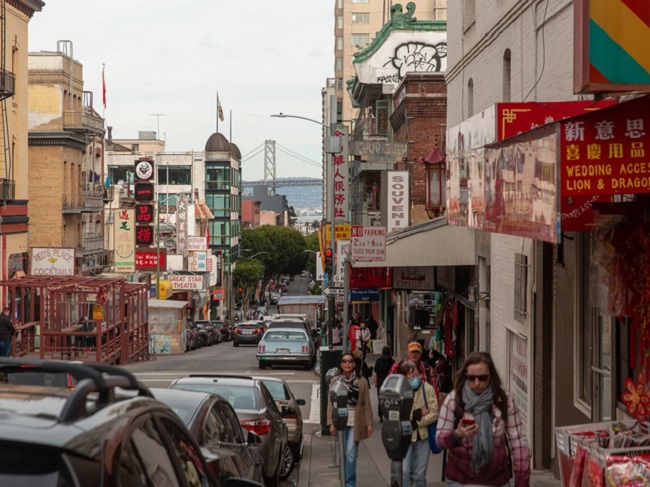Napa, CA – California’s tourism industry is bracing for significant losses, with revised forecasts showing a potential drop in visitor spending, primarily due to a decline in international arrivals, particularly from Canada. Visit California, the nonprofit organization responsible for promoting tourism in the Golden State, recently adjusted its forecast for this year, reducing the expected visitor spending from $166 billion to $160 billion. The organization attributed this adjustment to a noticeable slowdown in international travel, particularly from Canada, which is the second-largest source of foreign tourism dollars for California after Mexico.
The ongoing tensions between the U.S. and Canada, largely fueled by President Donald Trump’s controversial policies on tariffs, immigration, and gender identity, have created a climate of uncertainty among Canadian travelers. One of the most significant sources of frustration stems from Trump’s rhetoric about annexing Canada and his aggressive trade policies, which have led many Canadians to reconsider their travel plans to the United States. Many are now refusing to purchase American-made goods or cross the border at all.
According to Visit California, Canada accounted for $3.7 billion of the $26.5 billion in foreign travel spending that California received last year. With the current political climate worsening, tourism experts are warning that this source of revenue could be at risk.
The impact is already being felt. In February, Visit California reported an 8.8% year-over-year decline in international arrivals. This trend could spread to various industries under the tourism umbrella, including hospitality, airlines, and restaurants. The hotel sector, which employs millions of Californians, has been hit with uncertainty regarding future bookings. While some industry leaders remain optimistic about strong summer travel, they are deeply concerned about the broader implications of trade wars and shifting public sentiment toward the U.S.
Lynn Mohrfeld, CEO of the California Hotel and Lodging Association, expressed concern about the long-term effects of this downturn. “We don’t know whether we’re coming and going…so we would definitely love some consistency and stability,” he said, referring to the ongoing fluctuations caused by nationalistic rhetoric and tariff impositions.
Restaurants are expected to bear the brunt of the decline in tourism. Jot Condie, CEO of the California Restaurant Association, noted that tourists tend to spend more on food than lodging, meaning that a drop in visitors could have a disproportionate effect on restaurants, particularly in major cities like Los Angeles and San Francisco. The restaurant sector, already struggling from the aftereffects of the pandemic and the devastating wildfires earlier in the year, now faces an additional threat from international travel disruptions.
Airlines, too, are poised for possible setbacks. Caroline Beteta, CEO of Visit California, warned that a reduction in international visitors could lead to fewer airline routes to California airports, a development that could have long-term repercussions. “A decline in visitation can lead to airlines pulling routes from California airports, and that can have lasting effects,” Beteta explained.
The situation is further complicated by new travel regulations. Starting April 11, Canadian “snowbirds” who stay in California for extended periods will need to register with U.S. immigration authorities if their stay exceeds 30 days. This new policy, combined with the broader political climate, has led to frustration among Canadians who have long considered California a second home. Some are even contemplating selling their properties in the state, citing the uncertainty and challenges posed by the current administration’s policies.
Nancy, a Canadian dual citizen who has spent much of her life in California, shared her personal experience. “The instability is not what you want to deal with when you’re retired,” she said. Many of her fellow Canadians feel similarly, and discussions about boycotting U.S. travel and products have become commonplace among those who frequently visit California.
The economic consequences of these changes are not just affecting individual travelers. They are reverberating across the broader California economy, particularly in areas that rely on international tourism dollars. If current trends continue, the state could see a significant downturn in revenue from its tourism industry, with ripple effects felt across various sectors, from hospitality to retail to transportation.
Despite these challenges, Visit California remains committed to maintaining its marketing efforts in Canada. Beteta emphasized that California’s diverse culture and open-minded attitudes continue to be key selling points in attracting Canadian visitors, but whether that message will resonate remains to be seen. As Canadians increasingly turn to other international destinations, including Europe, the Golden State’s ability to recover from this tourism slump will depend on both political changes in the U.S. and a broader shift in the global travel market.
In the face of growing concerns, California’s tourism industry now finds itself caught in the crossfire of political tensions, trade wars, and shifting travel habits, unsure of how long it will take to regain its footing in the international market.

